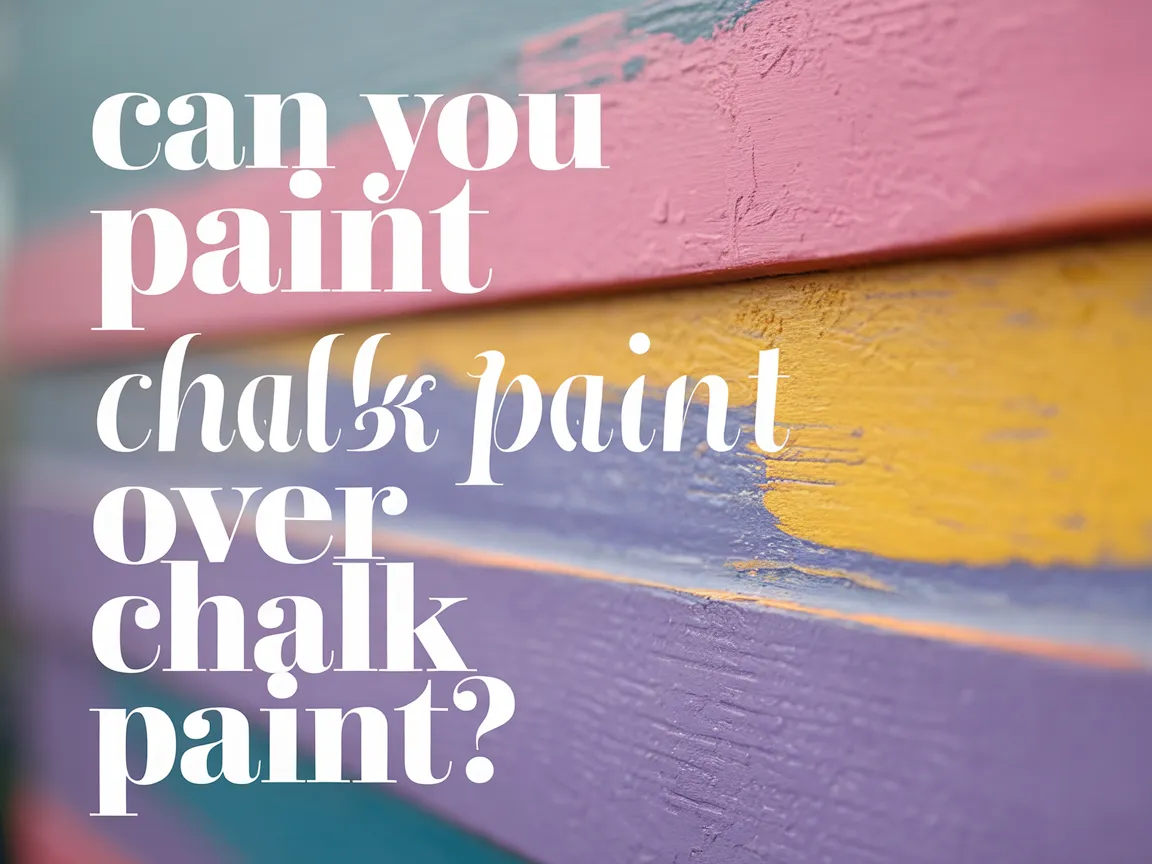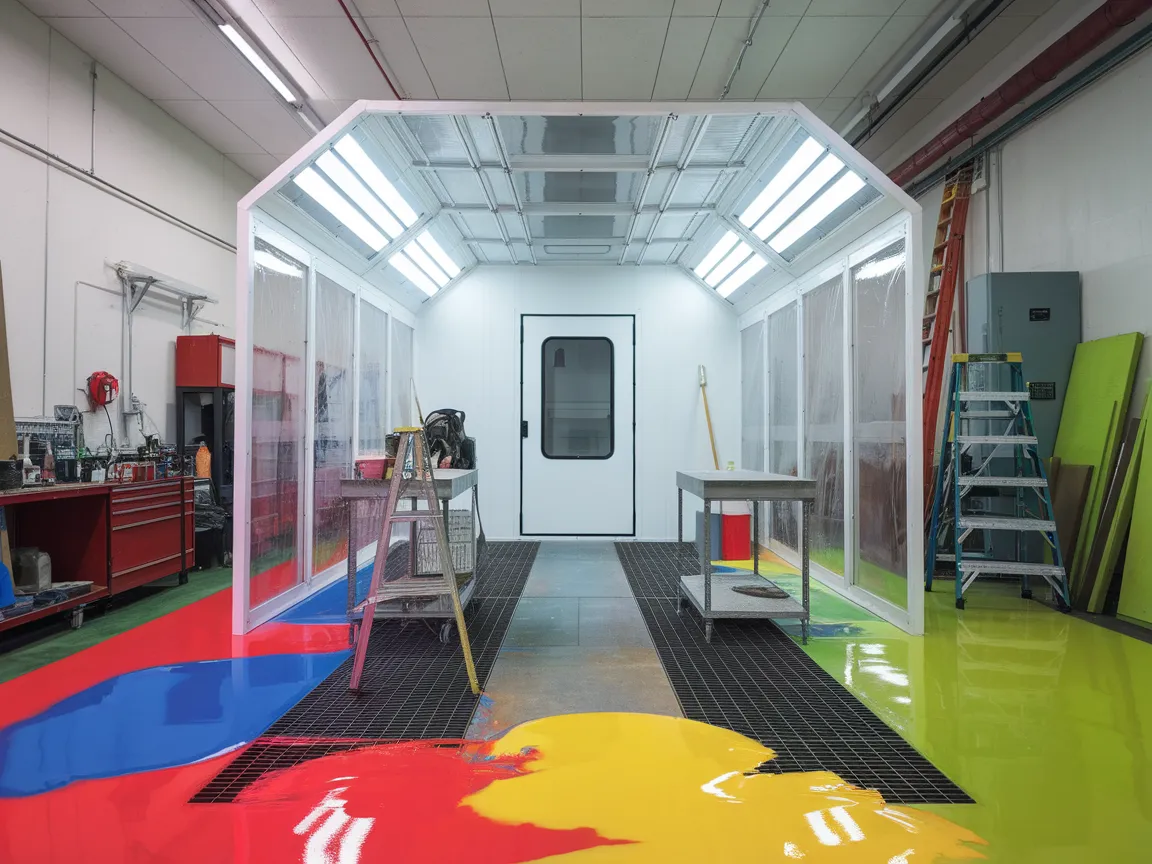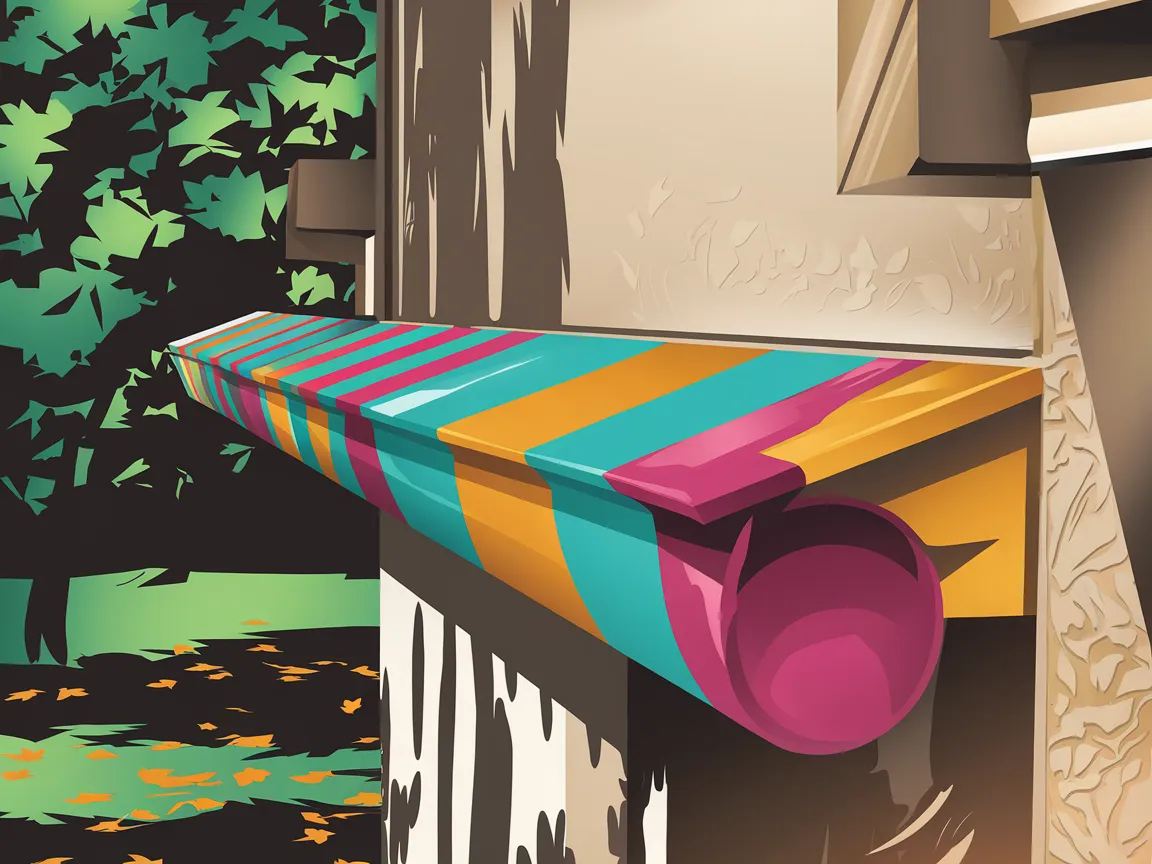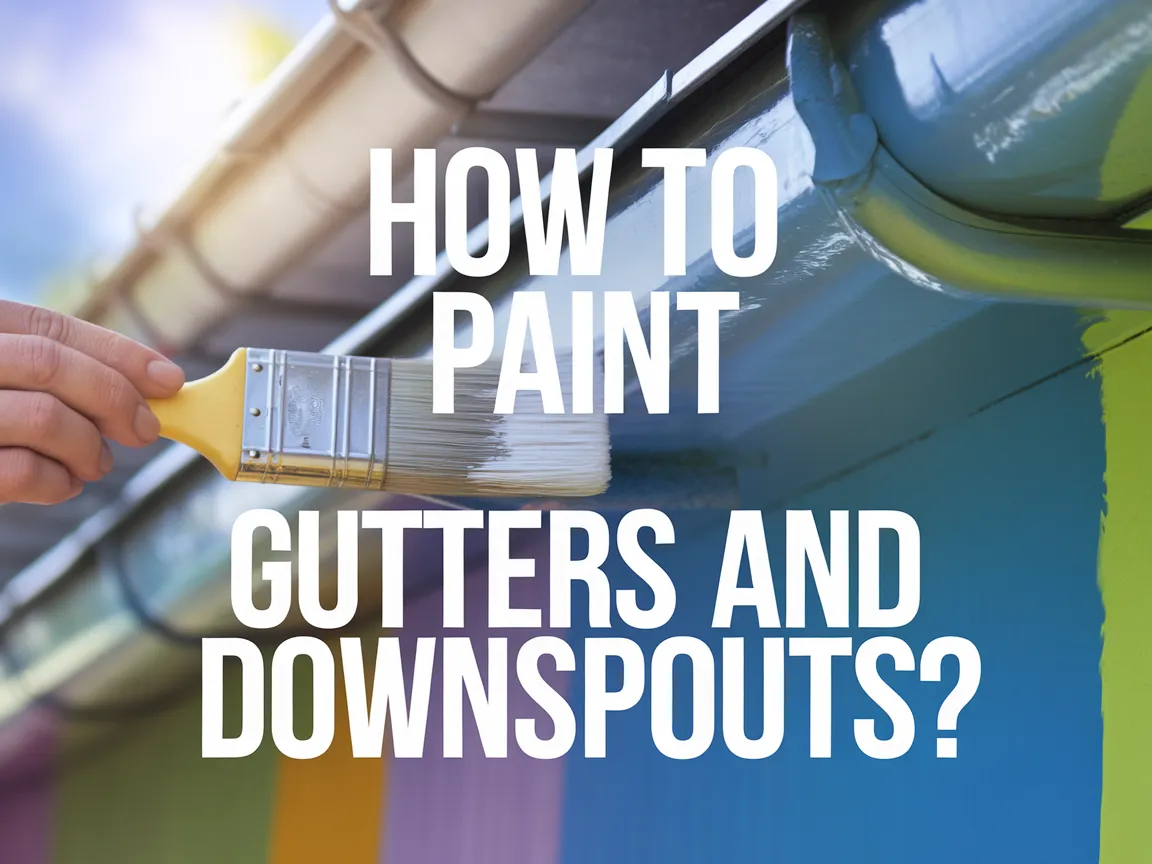How Much Area Can A Gallon Of Paint Cover?
Published on: April 17, 2025 | Last Updated: January 7, 2025
Written By: Sarah McClintock
Paint coverage is all about how much surface a gallon of paint can coat. Imagine painting a big wall; the paint spreads over it like spreading butter on bread!
You might wonder how much area a gallon of paint can cover. It’s crucial to know, so you don’t run out halfway through your project. I once painted my room, and understanding coverage saved me a trip to the store.
In this guide, you’ll learn about paint types, factors affecting coverage, tips before you start, and common problems to watch for. We’ll also touch on recommended palettes and how many gallons to paint a house, ensuring you’re all set for your project.
Contents
- 1 How Much Area Can a Gallon Of Paint Cover?
- 2 What is Paint Coverage?
- 3 Before You Start Your Painting Project
- 4 Steps to Determine Coverage Area
- 5 Estimating Paint Costs Based on Coverage
- 6 Impact of Surface Condition on Coverage Area
- 7 Estimating the Number of Coats Needed
- 8 Understanding Primer’s Role in Coverage
- 9 Types Of Paint and Their Coverage Area
- 10 Factors Affecting Paint Coverage
- 11 Common Issues When Determining Coverage Area
- 12 Finishing Touches for a Professional Look
- 13 Frequently Asked Questions
- 14 Conclusion
- 15 Additional Resources
How Much Area Can a Gallon Of Paint Cover?
A gallon of paint covers about 350 to 400 square feet (32.5 To 37.2 M²). This means you can paint a big room or even a small exterior wall. Keep in mind that rough surfaces may require more paint. To be safe, always check the can for specifics. When blending new paint with existing surfaces, you’ll want to ensure a seamless finish by matching colors and techniques precisely.
The Finishing Touch
A freshly painted wall is a blank canvas. The best way to bring your room to life is with a single piece of statement art that ties everything together.
Browse Wall Art at Big Wall DecorWhat is Paint Coverage?
Paint coverage refers to the surface area that a specific volume of paint can cover effectively. This coverage varies based on factors like the type of paint, surface texture, and application method, typically ranging from 10 to 15 square meters per liter (Approximately 100 to 150 Square Feet Per Gallon). If you encounter paint stains or unwanted color, you might want to explore effective paint removal techniques.
A gallon of paint usually covers around 350 to 400 square feet (Approximately 32.5 To 37.2 Square Meters). When I painted my living room, one gallon nearly covered the area, but I needed another for a nice finish. If you’re curious about creating specific paint colors from scratch, you might want to explore how to mix black paint effectively.
Understanding paint coverage is crucial for project planning. Miscalculating can lead to buying an extra gallon or two, which I’ve had to do when I underestimated painting a friend’s house!
Before You Start Your Painting Project
What do you need to understand about paint coverage?
- Measuring Tape: You need a measuring tape, such as Stanley’s 33-740, to determine space dimensions. Accurate measurements help calculate how much area a gallon of paint covers.
- Paint Calculator: A paint calculator, like the one at Sherwin-Williams, estimates the paint needed per area. This ensures you don’t buy too little or too much.
- Drop Cloth: Use a drop cloth, like Grizzly’s large canvas cover, to protect floors. It prevents messes when you find out gallon coverage per square foot.
- Paint Roller: Get a quality paint roller, such as the Purdy Ultra Finish. It optimizes paint application and maximizes coverage per gallon.
We have now covered essential preparations for your painting project. The next section will outline how to determine the coverage area.
Also See: Can You Paint Composite Deck Boards? Quick Tips!

The Finishing Touch
A freshly painted wall is a blank canvas. The best way to bring your room to life is with a single piece of statement art that ties everything together.
Browse Wall Art at Big Wall DecorSteps to Determine Coverage Area
Now, we’ll cover the steps to determine how much space one gallon of paint can cover in your projects.
-
Calculate the Surface Area to Be Painted
Start by measuring the walls or surfaces you want to paint. For walls, multiply the width by the height to get square footage for exterior walls, like 10 ft x 8 ft equals 80 sq ft (7.43 M X 2.44 M Equals 7.43 M²).
Don’t forget to subtract areas that won’t be painted, like windows or doors. If you have a standard door (About 21 Sq Ft or 1.95 M²), deduct that space from your total area.
-
Choose the Right Type Of Paint
Select appropriate paint based on the surface type and desired finish. For instance, latex paint typically covers about 400 sq ft (37.16 M²) per gallon on indoor walls, while oil-based paint may cover slightly less. If you’re dealing with challenging surface conditions like mold, you’ll want to take extra precautions before painting addressing black mold effectively.
Remember, different surfaces absorb paint differently; new, rough surfaces may absorb more. Test your paint on a small area to see how much you really need before starting.
-
Consider the Application Method
Your painting method affects coverage. A brush generally applies thicker layers than a roller, which may lead to better coverage. Keep in mind that a sprayer can provide an even coat but may overspray easily.
Typically, rollers cover about 300-400 sq ft (27.87-37.16 M²) per gallon, while brushes cover about 200 sq ft (18.58 M²). Adjust your coverage expectations based on your chosen application method.
-
Factor in Surface Conditions
Carefully examine the condition of your surfaces. Uneven or previously painted surfaces can absorb paint, reducing coverage, while smooth surfaces may reflect paint better for even coverage.
If your walls need prep or patchwork, it’ll change the total gallons needed. It’s wise to err on the side of caution; consider using a dedicated primer if needed, especially in areas with stains or repairs!
We have now covered the steps to determine coverage area. The next section will focus on estimating paint costs based on coverage.
Estimating Paint Costs Based on Coverage
Want to know how to plan your paint budget? Understanding coverage can help you pinpoint costs.
Here’s a quick breakdown of how much a gallon of paint typically costs and what you can expect based on coverage:
| Type of Paint | Coverage Area (sq ft) per Gallon | Approx. Cost per Gallon ($) | Cost per Coverage Area ($/sq ft) |
|---|---|---|---|
| Latex Paint | 400 | $30 – $60 | $0.075 – $0.150 |
| Oil-based Paint | 300 | $40 – $70 | $0.133 – $0.233 |
| Acrylic Paint | 350 | $25 – $55 | $0.071 – $0.157 |
| Spray Paint (12 Oz can) | 20 | $5 – $10 | $0.25 – $0.50 |
As you can see, latex paint usually offers the best coverage at the lowest cost. Oil-based paints are pricier and cover less area. So, plan your budget wisely! Estimating well helps avoid surprise costs halfway through.
That covers estimating paint costs based on coverage. Let’s now take a look at how surface condition affects coverage area.
Impact of Surface Condition on Coverage Area
The condition of your surface can heavily influence how much area a gallon of paint covers.
- New Surfaces: Fresh drywall may soak up more paint. Expect to cover about 200 to 300 sq ft (18.58 to 27.87 M²) per gallon.
- Previously Painted Surfaces: Generally, they often require less paint, covering around 350 to 400 sq ft (32.5 to 37.2 M²) per gallon, depending on the old paint’s condition.
- Stained Surfaces: Areas with stains or old weathering may need a primer first, which reduces the coverage area to about 200-250 sq ft (18.58 to 23.23 M²) per gallon.
- Textured Surfaces: These surfaces can dramatically cut down the area covered. Expect as low as 150 to 250 sq ft (13.94 to 23.23 M²) per gallon.
So far we covered how surface condition affects coverage area. Let’s look at estimating the number of coats required next.
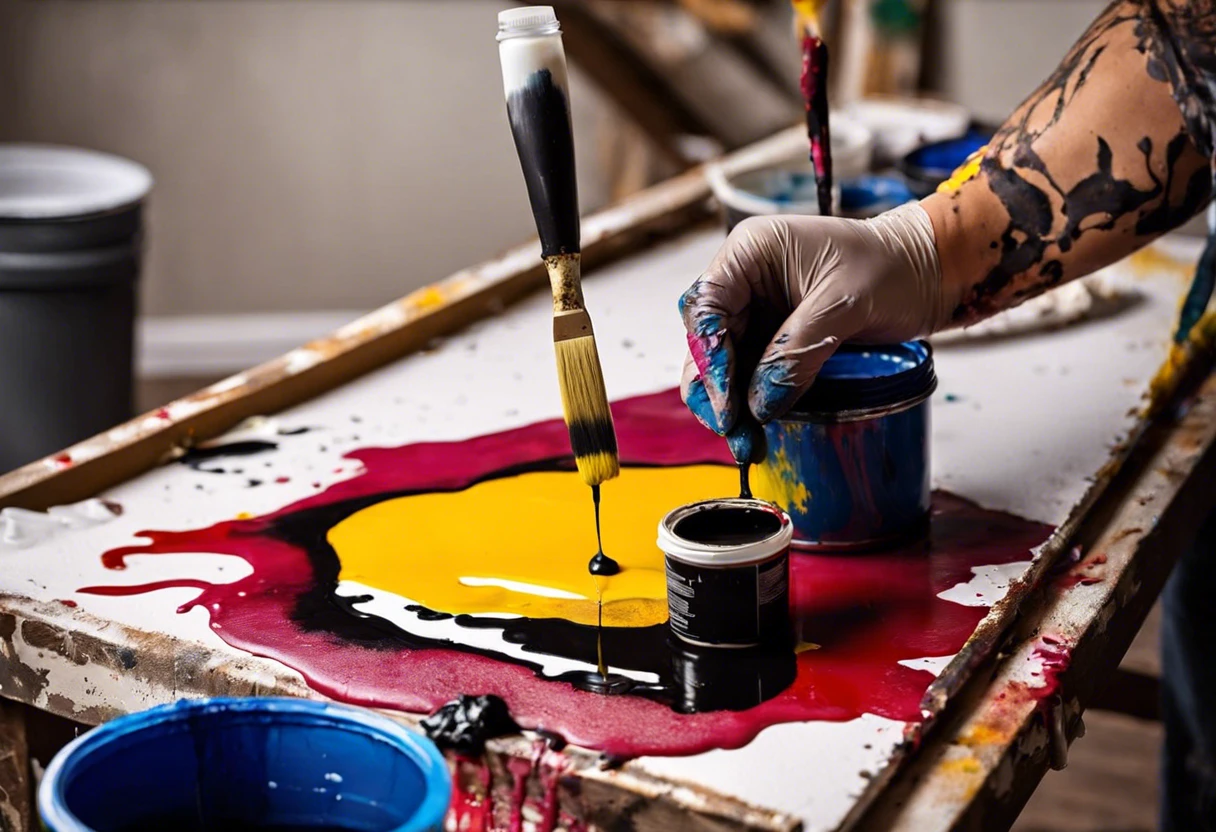
Estimating the Number of Coats Needed
Coats matter! Knowing how many layers you’ll need can help you avoid overspending on paint.
| Surface Type | Recommended Coats | Estimated Coverage Area (sq ft/gallon) | Total Coverage Needed (sq ft for 2 coats) |
|---|---|---|---|
| New Drywall | 2 | 250 | 500 |
| Previously Painted Walls | 1 | 400 | 400 |
| Stained Areas | 2 | 200 | 400 |
| Textured Surfaces | 2 | 200 | 400 |
Double-check your estimates! A second coat can enhance durability and color depth. Planning for more paint saves time and hassle.
Understanding Primer’s Role in Coverage
Primer is often overlooked but plays a big part in paint coverage.
- Coverage Rate: A gallon of primer typically covers about 200 to 300 sq ft (18.58 to 27.87 M²).
- Surface Preparation: Applying primer seals porous surfaces, improving final paint coverage.
- Saving Money: Good primer reduces the amount of finish paint needed, which can be more cost-effective overall.
Using primer can seem like an added step, but it can save you both time and money in the long run. Your final coat will last longer and look much better!
Types Of Paint and Their Coverage Area
Let’s explore the different types of paint: latex, oil-based, acrylic, and spray paint.
The Finishing Touch
A freshly painted wall is a blank canvas. The best way to bring your room to life is with a single piece of statement art that ties everything together.
Browse Wall Art at Big Wall Decor-
Latex Paint
Latex paint is water-based and popular for walls. A gallon (3.8 L) typically covers up to 400 sq ft (37 M²).
-
Oil-based Paint
Oil-based paint provides a durable finish, making it great for trim or furniture. One gallon (3.8 L) generally covers about 300 sq ft (28 M²).
-
Acrylic Paint
Acrylic paint is versatile and fast-drying, ideal for various surfaces. A gallon (3.8 L) covers approximately 350 sq ft (33 M²).
-
Spray Paint
Spray paint is perfect for small projects and intricate details. One can (About 12 Oz or 0.35 L) usually covers around 20 sq ft (1.86 M²).
Here’s a tip: I love latex paint for interior walls because it’s easy to clean and dries quickly. Plus, it covers more area, allowing me to finish jobs faster.
Factors Affecting Paint Coverage
What factors influence the area covered by a gallon of paint?
-
Surface Texture: Rough surfaces absorb more paint, reducing coverage.
-
Paint Thickness: Thicker coats use more paint, limiting coverage area.
-
Type of Paint: Some paints, like primers, provide less coverage than standard paints.
-
Color Change: A drastic color change may need extra coats, using more paint.
Common Issues When Determining Coverage Area
Your buddy once thought a gallon of paint could cover his whole living room. Surprise! It only covers about 32-37 m² (350-400 Sq Ft) on smooth surfaces—less on textured ones.
To fix this, always measure your space first. For accuracy, multiply length by width, then divide by coverage. This way, you’ll know exactly how many gallons you need!
Finishing Touches for a Professional Look
After estimating the area a gallon of paint covers, allow it to cure for 4 to 6 hours before applying a second coat. Higher humidity may slow drying, so ensure proper airflow.
Inspect your coverage closely. Use a quality matte clear coat, like Minwax, to brush over trouble spots from 30.5 cm (12 Inches) away, ensuring uniform thickness across affected areas.
If you’re experienced, experiment with layering techniques. Test additional coverage with textured primers for a smoother finish using a spray setup with 0.8 to 1.2 mm nozzle sizes for precision.
Frequently Asked Questions
Do I Need to Prime Before Painting?
Yes, you need to prime before painting. Priming helps paint adhere better and can reduce the number of coats needed. For example, using primer can cover porous surfaces effectively, ensuring your finish looks great.
What Type Of Paint is Best for Exterior Use?
The best type of paint for exterior home painting is 100% acrylic paint. This paint resists fading, blisters, and peeling, making it ideal for various weather conditions. It also provides excellent UV protection and durability.
Can I Use Leftover Paint for Touch-ups?
Yes, you can use leftover paint for touch-ups. Ensure the paint is the same type and color as originally used to avoid mismatched finishes. Just be cautious, as older paints can dry differently. If you notice unexpected issues like paint flaking, you might want to investigate potential ceiling paint problems.
How Can I Calculate the Amount Of Paint Needed?
You can calculate the amount of paint needed by measuring the surface area you intend to paint. A standard gallon (3.785 L) covers about 350 square feet (32.5 M²) on flat surfaces. Always round up to buy extra for touch-ups! If you’re planning to paint blacktop surfaces effectively, additional considerations come into play.
How Much Does a Gallon Of Paint Weigh?
A gallon of paint weighs about 8 to 12 pounds (3.6 To 5.4 Kg), depending on the type. This detail matters when transporting or shipping paint. A lighter paint, like latex, typically weighs less than oil-based paints. If you’re curious about the artistic legacy behind paint, Bob Ross’s iconic paintings showcase the transformative power of color and technique.
How Much is a Gallon Of Paint at Sherwin-williams?
A gallon of paint at Sherwin-Williams typically ranges from $30 to $60 depending on the finish and type of paint you choose. Prices can vary based on promotions or specific collections they offer. If you’re curious about exploring different painting techniques beyond traditional wall coverage, body paint offers fascinating creative possibilities.
Conclusion
I hope this provided the insights you were looking for regarding the area a gallon of paint can cover. We discussed paint coverage, methods for determining coverage, various paint types, factors that influence coverage, and some creative DIY project ideas.
Happy painting! Remember, a gallon of paint typically covers between 350 to 400 square feet (32 to 37 M²). Plan accordingly to maximize your paint usage and achieve an even finish.
For further expert guidance and tips, visit Paint Answers.
Additional Resources
- Edwards, B. (2012). Drawing on the Right Side of the Brain. New York, NY: TarcherPerigee.
- Paint Calculator
- How Much Does a Gallon of Paint Cover and What Tools To Use – PaintRite Pros






